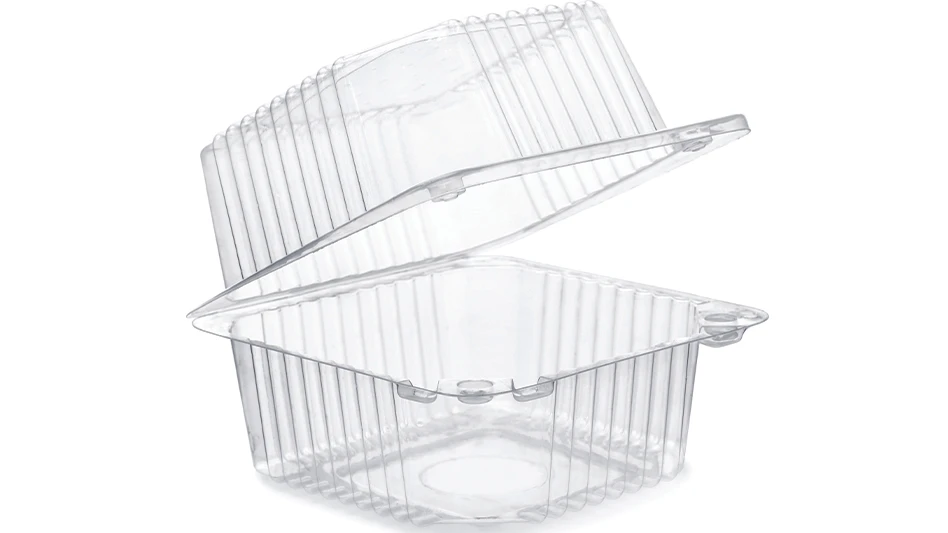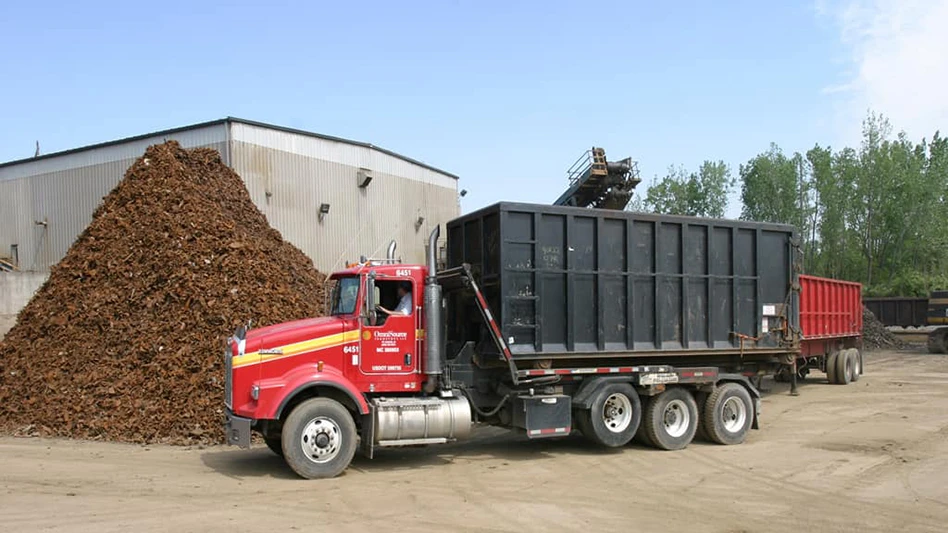Safety is a primary concern, but an overwhelming challenge, for recyclers. Could a more cooperative philosphy at OSHA make safety a more realistic goal?
Every day, scrap processing and recycling companies rely on their employees to maintain a productive, efficient and cost-effective operation. The degree to which employees can accomplish these objectives depends largely on the degree of safety in their work environment.
David "Cap" Grossman, president of the Institute of Scrap Recycling Industries, Washington, considers worker safety paramount -- not only for his St. Louis-based company, Grossman Iron & Steel, but for ISRI membership in general.
"I think the lives and well-being of the people that we work with and who entrust their safety to our managerial care is the most important thing that we deal with every day," he says. "As soon as it becomes number two, you put that safety in jeopardy, and you create doubt in the minds of the people that need to believe in you ... There is just nothing more important than that. And I don’t know that anybody can debate me to arrive at an altogether different conclusion."
Mike Mattia, ISRI’s director of risk management, is no stranger to the issue of worker safety and loss prevention. Based on the numerous safety-related inquiries he receives from the membership on a weekly basis, he considers it "one of the number one concerns" among scrap processors.
"With operational costs escalating and workers compensation going through the roof in many cases, safety and loss prevention is being seen as more than just a way to placate OSHA (the Occupational Safety and Health Administration)," Mattia says.
Mattia cites national figures that indicate that workers compensation costs for 1993 were triple what they were in 1980, and are expected to triple again by the year 2000 to more than $70 billion.
A proactive approach to worker safety and health, then, can actually be a profit tool, says Mattia. "It’s a way that you can reduce your costs by reducing your comp claims," he says. "You increase your profit margin not only be reducing your comp claims, but by keeping your experienced workers on staff, and not having to replace them because of injuries. It greatly increases employee morale. So you again increase productivity because people are working more safely, and they’re happier working under the umbrella of a management that really cares about them personally."
But the regulatory game of worker safety and loss prevention involves some high risks, Mattia says. Scrap processors and recyclers have grown wary of what he calls a "cop-on-the-block" mentality among OSHA inspectors and compliance officers over the past two to three years.
HIT LIST
Mattia cites seven standards that OSHA tends to watch closely during inspections of scrap yards. These are: lead and/or cadmium exposures standards; lockout-tagout standards; hazard communication standard; confined standard; accident and injury recordkeeping standard; and the personal protective equipment standard, including a written program detailing what, when and how it must be worn (see sidebar).
"That’s pretty much the hit list where OSHA inspectors walk into a yard and say, ‘I want to you to prove to me that you’re doing this stuff.’"
In addition to these standards already on the books, there are standards currently in the rulemaking pipeline that could have an effect on the industry in the next few years.
"The two that are definitely in the pipeline and have been held up for political reasons is, number one, the ergonomics standard. Secondly, there’s a standard that we’ve heard that was imminent until the elections, dealing with driver training and certification for powered industrial vehicles (like forklifts). We’re waiting to hear when OSHA is actually going to issue them."
In Capitol Hill parlance, however, "imminent" can mean anything from three months to three years. "The confined space standard was supposed to be issued before the end of last year, as was the powered industrial vehicle standard," Mattia notes, "But the elections sent a strong signal to re-tool the standards a little bit so that they don’t become political time bombs."
LOBBYING
Rather than try to exert lobbying influence on each rule or proposed rule, ISRI tends to pick its battles with OSHA a little more carefully, says Mattia. With OSHA standards cutting across virtually every industry, ISRI tends to focus on those issues that could have a direct impact on the scrap processing business.
"These are everybody’s issues," he says of OSHA rulemaking and compliance. "For example, the National Association of Manufacturers has been lobbying hard on the ergonomics issue, in an effort to make it more small business-friendly. There’s no need for us to jump into that fray while NAM is involved in those efforts."
ISRI did step in and speak up a little more than a year ago, when OSHA issued an advance notice of proposed rulemaking regarding revisions to its crane operating standard. Among these revisions were certification requirements for crane operators.
"Just about every scrapyard operates a crane," Mattia concedes, "but the way we operate a crane is extremely different from the way that, say, a construction company operates a crane, or anybody else operates a crane, for that matter."
ISRI polled its membership and developed some in-depth testimony suggesting that OSHA make concessions for the scrap industry when establishing a crane standard.
"I think the main thing that we did with that was let OSHA know that when you’re looking at cranes, you have to realize that the way that crane is used in a scrap yard is going to be 180-degrees different from the way a crane is used probably anywhere else, Mattia points out. You might write a great standard that could apply to one industry, but you may be putting requirements that are not necessary and even cumbersome to a worker in a scrap yard.
"For example, there’s no need to be worried about having a worker certified on sling operations and load lifts and weights if he’s operating a crane in a scrap yard, and is therefore never going to use a sling, and the weight of his lifting is dependent upon the weakest element, which is the magnet, which can lift only a fraction of the cranes capacity. So don’t put requirements on him that he doesn’t have to have."
TOO GENERIC?
The crane episode raises the question of whether OSHA standards are too generic, and don’t take into consideration operational and procedural issues that are specific to different industries.
"I think there are excellent elements in any OSHA standard, but there are times that they try to be very generic and across-the-board," says Mattia. "So you’re going to have industries that, to comply with the standards, really have to go the country mile to comply with them. In the long run, there is some question about how effective that can be."
For example, OSHA’s lockout-tagout rule is "a great standard," by Mattia’s estimation. It is designed to protect operators of heavy equipment such as shredders, balers and shears.
"But then, you have issues like the hazard communication standard," he says, which are too generic. "Because of the generic nature of the beast, scrap was coming into scrap yards as articles -- cars, washing machines -- that didn’t come with material safety data sheets. The minute processors tore them apart and made scrap out of them, they required MSDSs. But there were no MSDSs for scrap. So we had to go out and create them for our members."
Mattia would like to see a more goal-oriented approach to rulemaking that would allow individual companies in individual industries to develop their own methods of compliance.
"That way, they’re not tied to this thinking of, ‘I can only use this type of apparatus, and I can only do that type of training.’"
He admits that OSHA is moving in a more goal-oriented direction by comparison to its rulemaking philosophy in earlier years. "If you look at the stuff that OSHA put out in the early days, they had schematic diagrams on what toilets should look like, he says. They’re moving away from that."
In addition to industry-specific concerns, there are affects on small businesses that OSHA should consider.
"Should some thought not be given to allowing small businesses to be more flexible in their compliance?" Mattia poses. "Granted you should set a goal ... but try to be a little more flexible so that people aren’t flunking on the fine print when they’re really trying to comply with the general rule."
OSHA ROLE
The question becomes, what is OSHA’s role in compliance enforcement? Should the agency be the watchdog that Mattia suggests they have become, or should they be more the consultant to industry -- a partner in developing and maintaining an effective safety and health program?
"The best person to bring in to help you solve (a problem) might be the OSHA compliance officer," Mattia points out. "But if you bring them in to help you out, well then I’m showing you where my problems are and you can cite me on them."
OSHA has taken an aggressive, not-so-friendly enforcement role in the past year or two, acording to Mattia, conducting inspections with heightened scrutiny and imposing stiffer fines and penalties -- not only at recycling yards but throughout industry.
"The concern of ‘how do I prevent an OSHA citation?’ has become greater than ‘how do I make my people safer?’ Especially when OSHA is on this tear out there, citing companies even when there is a good-faith effort to comply."
Much of the confusion among scrap processors stems from the sheer volume and complexity of safety regulations already on the books, says Mattia. A processor can become overwhelmed in his efforts to comply with all applicable safety standards.
"A lot of regulations are complex," he observes. "A lot of them have multiple parts, and you’ll get OSHA in some cases saying, ‘hey, you did most of the stuff required of you under the hazard communication standard, but you missed one, and I’m going to cite you for it.’ So it becomes a game of, ‘well, I’m here at your yard. I have to cite you for something, so I’m going to nitpick.’ So even the best yards are getting something cited."
Jim Stanley, deputy assistant secretary of labor at OSHA, agrees that this has been the traditional view at the agency, but also suggests that it is a view that is gradually moving into a more proactive direction.
"We’re looking to actually change the behavior of the employer," according to Stanley. "We have finally realized that just looking after hazards in the workplace isn’t doing much."
Stanley suggests that every workplace inspection conducted by an OSHA compliance officer should have a lasting impact on the employer’s approach to safety and health. "It shouldn’t be a situation where we just go in, find problems, leave and then leave everything up to the employer. We need to go in and encourage through our intervention the establishment of a safety and health program in that facility that involves employees and management in a long-term solution...I think that’s the way we’re heading."
The role that the OSHA compliance officer is not likely to take on, however, is that of safety and health consultant, says Stanley.
"There are consultation programs that we fund, and we want employers to take advantage of them," he points out. "But I think that if we do an inspection in the scrap yard, we ought to be looking foremost at the employer’s safety and health program.
"We have to encourage poeple to take a more proactive safety and health stance -- especially in the scrap industry, where a lot of companies are smaller businesses. They’re not major companies and they don’t have the expertise to do a lot of (safety-related programs). But they could do it if they got a little gentle nudge in the right direction. But if they look at us as nothing more than a consultant, then let’s be honest, they’re not going to do anything until they get inspected."
SMALL BUSINESS
Representing an industry that includes hundreds of small businesses, Mattia would like to see some credit extended to companies with finite resources that are making a good faith effort to stay in compliance with OSHA regulations.
"There still should be penalties for companies who do not attempt to try to improve the safety of the workplace," he says. "But you don’t want to go in and fine them because they’ve really tried hard but you found something that slipped through the cracks.
"Right now the benefit of the doubt is on the flip side. You can go in and an inspector can tear through your yard and find all the little things that you missed, and then you can go back to the director and say, ‘But look at my safety record. Look at my injuries. I don’t really deserve the penalties based on the fact that I’ve really been trying.’ Then what happens is they reduce the penalties, but they’re still there. So you’re given a negative incentive. You’re penalized for everything you’ve missed, but not given any credit for what they’ve done."
To accommodate smaller businesses, Stanley says OSHA might consider developing a joint arrangement with the scrap industry that would call for an inspection of an employer’s safety and health program as the first step in the overall inspection process. If the safety and health program is found to be deficient or even nonexistent, then a more thorough inspection of the facility would follow.
"But if you did have a good safety and health program that was working, and you had trained people who were implementing the program, then we would only going to go out to your yard to look at the things that were really potentially hazardous," he explains.
"As a matter of fact, if you were doing a good job, we might even just leave the premises. That would encourage the industry to do a better job in the program side. In my mind, that’s the future of OSHA. That’s where we should be going. That way, in the scrap industry, we would be spending a lot less time with the better employers and a lot more time with the not-so-good employers."
EDUCATION
Mattia says ISRI’s approach to educating its membership about workplace health and safety regulations and compliance has been a "non-stop" objective. ISRI issued its Safety Reference Manual in May 1993, and continues to revise it on a regular basis.
"It takes all the OSHA requirements, and even some recommendations, and puts them in an easy-to-understand format," he says. "We have over 100 topics in there that cover everything from equipment guarding to personal protective equipment to confined spaces, and puts it in English.
"If you’ve ever read an OSHA standard, you realize that they’re not intended for the average reader. That’s another problem. The law is written for lawyers, and OSHA standards are written for consultants, who then take them and say, ‘okay, I’m going to tell you what this means in English.’"
On the regulatory side, OSHA’s Stanley is equally interested in promoting the education and communication process. He says he would be "very interested" in discussing with ISRI ways to make safety compliance more manageable, while continuing to reduce workplace accidents and illnesses in the scrap industry.
"If the industry believes that we’re not achieving that goal because we’re not focusing on the right issues, then I’d be happy to talk to them about that," he says. "We can change. There’s nothing that says the administration cannot change. If they feel like there are issues that are in fact causing injuries and illnesses, and we ought to be creating a reason for employers to do more in those areas and less in areas that really aren’t affecting anything, then I’ll be happy to discuss that."
Mike Mattia, director of risk management at the Institute of Scrap Recycling Industries, lists seven Occupational Safety and Health Administration standards that are likely to rank high on the list of an OSHA inspector walking through a scrap processing yard. For more detailed information about compliance with these and other workplace safety and health standards, consult the ISRI Safety Reference Manual.
Cadmium standard: Requires employers to implement engineering and work practice controls to reduce and maintain employee exposure to cadmium at or below the permissible exposure limit (PEL). If such controls are not sufficient to reduce employee exposure to acceptable levels, the employer must institute appropriate respirator protection.
Lead standard: requires the employer to implement engineering and work practice controls to reduce and maintain employee exposure to lead except to the extent that the employer can demonstrate that such controls are not feasible. If such controls are not sufficient to reduce employee exposure to acceptable levels, the employer must supplement employee protection by the use of respirators.
Lockout/tagout standard: Requires an employer to develop a program for affixing appropriate lockout or tagout devices or to otherwise disable equipment to prevent unexpected start-up or release of stored energy that could potentially injure employees.
A lockout device must use either a key or combination lock to hold an energy-isolating device in a safe position. A tagout device must be a prominent warning device that can be fastened to an energy-isolating device.
An employer with equipment or machines covered by this standard must have a written control program that outlines the lockout/tagout procedures and employee training on these procedures.
Hazard communication standard: requires an employer to have a program that provides information on hazardous chemicals used or produced in the workplace to employees and dowstream receivers of the material. Employers must maintain a written program describing: the use of labels and other warning notices; the use of material safety data sheets; and employee information and training programs. Employers must ensure that containers of hazardous chemicals are labeled, tagged or marked with the identity of the chemicals inside and the appropriate hazard warnings. Information and training is required for all hazardous chemicals in their work area.
Confined space standard: Defines "confined space" as a space that: has limited or restricted means of entry or exit; is large enough for an employee to enter and perform assigned work; and is not designed for continuous occupancy by the employee. The standard requires that employers identify all confined spaces in the workplace; determine hazards associated with each confined space; and develop and implement a permit-required confined space program for those spaces that have hazards associated with entry.
Accident/injury recordkeeping standard: requires that a variety of applicable documentation be maintained in the workplace. These include: injury and illness records; hazard communication records, including a written program, material safety data sheets, lists of hazardous chemicals and documentation of employee training. Other records required under the standard include: employee exposure and medical records; employee training records; and records documenting certification and equipment inspection and maintenance.
Personal protective equipment standard: Protective equipment and clothing used by all employees who may encounter work conditions or environments capable of causing injury or impairment.
Protective equipment includes — but is not limited to — protection for eyes, face, head and extremities; hearing protection; protective clothing; respiratory devices; and protective shields and barriers.
Employers must also maintain a written program outlining the proper use of personal protective equipment.
Get curated news on YOUR industry.
Enter your email to receive our newsletters.

Explore the March 1995 Issue
Check out more from this issue and find your next story to read.
Latest from Recycling Today
- Toppoint Holdings expands chassis fleet
- Lego creates miniature tire recycling market
- Lux Research webinar examines chemical recycling timetables
- Plastics producer tracks pulse of wire recycling market
- Republic Services, Blue Polymers open Indianapolis recycling complex
- Altilium produces EV battery cells using recycled materials
- Brightmark enters subsidiaries of Indiana recycling facility into Chapter 11
- Freepoint Eco-Systems receives $50M loan for plastics recycling facility





